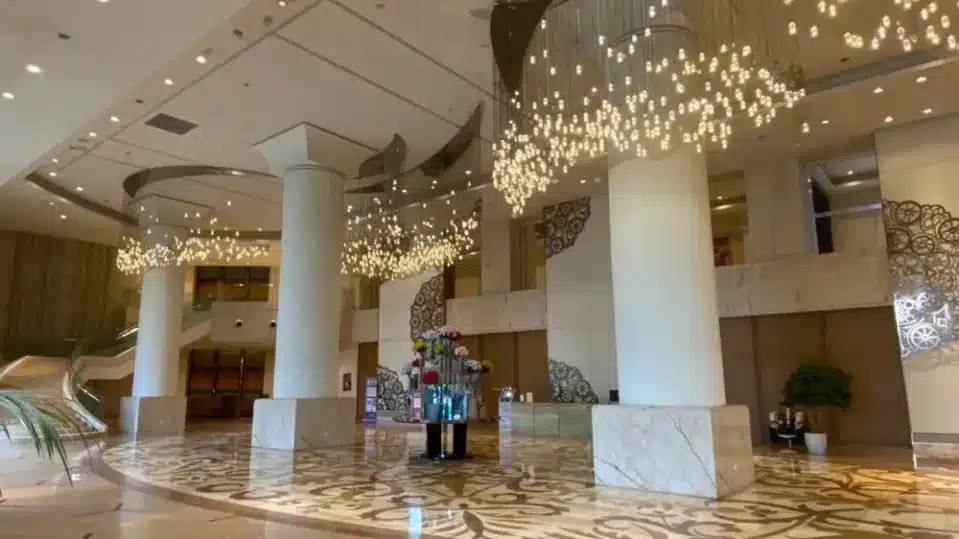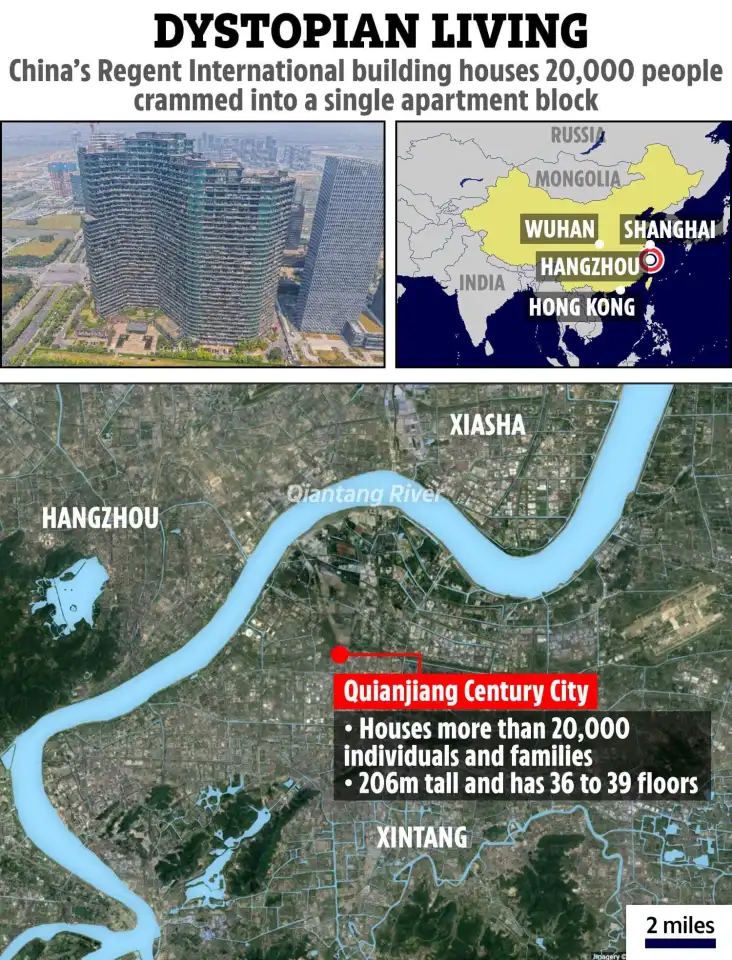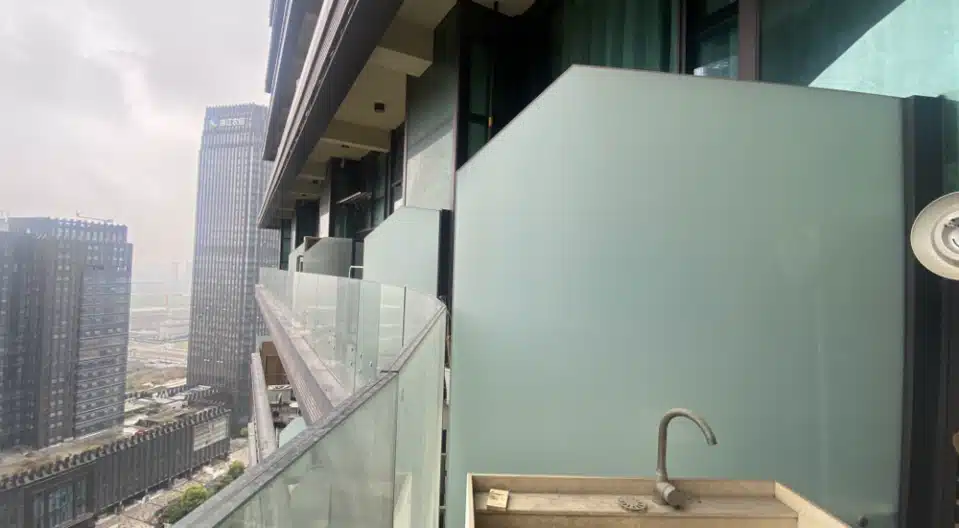A building in China labeled a “Dystopian Apartment,” has recently gone viral on TikTok. This massive complex, capable of housing up to 30,000 residents, has stunned viewers. The video, posted by TikTok user @fatheristheone, used a drone to capture the immense size of the building. The footage not only highlights its unique design but also leaves viewers astonished at the sheer scale of this urban dwelling.


Known as Regent International, this so-called “dystopian” apartment is situated in Qianjiang Century City, in the heart of Hangzhou’s central business district. Designed by Alicia Loo, the architect behind the Singapore Sands Hotel, the building opened its doors in 2013. Standing 675 feet tall, it houses approximately 20,000 people across its 36 or 39 floors, depending on which part of the S-shaped structure you’re in. Unsurprisingly, this makes it one of the most densely populated buildings on the planet.

With everything available inside, it’s easy to imagine residents might never need to leave the building. This raises concerns about whether people in such a place would still enjoy the outdoors, feel the sunlight, or breathe fresh air. However, the residents of Regent International aren’t trapped. Most are young professionals, influencers, or students who benefit from the convenience and cost-effectiveness of living in such a densely populated environment.

Beyond convenience, affordability is a major draw. Apartment sizes and prices vary, but units in Regent International can be rented for as little as 1,500 RMB (about $200) up to 4,000 RMB (just under $600) per month, making it an attractive option for those seeking an affordable yet connected lifestyle.
Despite its “dystopian” label, the building has also earned praise for its innovative design. Some even hail it as “the most sustainable living building on earth,” showcasing a new model of urban living that addresses the challenges of overcrowding and limited space.

This kind of housing may offer a potential solution to the housing crisis currently gripping the U.S. With minimal land use, buildings like Regent International could serve as a model for future urban development. A similar concept already exists in Whittier, Alaska, where a 14-floor building houses all 272 of the town’s residents. Much like Regent International, this Alaskan building contains essential services such as a church, school, post office, and police station.
Of course, living in such close quarters has its downsides. One reason people describe it as “dystopian” is the lack of personal space. Many Americans prefer privacy, space from their neighbors, and access to outdoor areas like yards. While some larger units in Regent International come with balconies, many residents are confined to smaller spaces with little opportunity to enjoy fresh air, unless they step outside or venture to communal areas.


